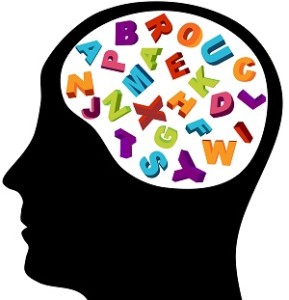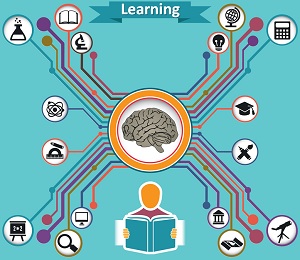26 Apr Continuity of Learning
 Production and Comprehension
Production and Comprehension
We know that comprehension and language production occur in different areas of the brain and occupy opposite ends of the continuum in the communicative model. The relative independence of the production and comprehension centers suggests one of three possibilities:
- Syntactic and lexical data are replicated in both the production and comprehension centers of the brain.
- This data is not located in either center but is shared by both.
- Some combination or overlapping of the first two possibilities applies: some data is replicated in both centers, some is located elsewhere, and only the task-specific information is local.
The third possibility is wholly consistent with a medium-grained theory with linked conceptual paradigms (described in yesterday’s post).
| Understanding Context Cross-Reference |
|---|
| Click on these Links to other posts and glossary/bibliography references |
|
|
|
| Prior Post | Next Post |
| Conceptual Paradigms | Mosaic of Concepts |
| Definitions | References |
| language comprehension | Pinker 1984 |
| learning cognition | Dennett 1991 |
| communication rule | Stemberger 1988 |
 Pinker describes a “continuity assumption” about the learning process in children and adults. Pinker’s theory basically suggests that children and adults use similar or the same mechanisms to cogitate and communicate. He distinguishes between cognitive and grammatical mechanisms (despite a lack of data to show the differences) but states a basic principle that certainly seems applicable: “The child’s grammatical rules should be drawn from the same basic rule types, and be composed of primitive symbols of the same class, as (adults’)” (1984, p.7).
Pinker describes a “continuity assumption” about the learning process in children and adults. Pinker’s theory basically suggests that children and adults use similar or the same mechanisms to cogitate and communicate. He distinguishes between cognitive and grammatical mechanisms (despite a lack of data to show the differences) but states a basic principle that certainly seems applicable: “The child’s grammatical rules should be drawn from the same basic rule types, and be composed of primitive symbols of the same class, as (adults’)” (1984, p.7).
If observations about “imaginal thinking” or using pictures to associate objects with concepts are indeed central to human cognition, then an accurate model of language will incorporate an image component. Daniel Dennett observes that “a major source of widespread skepticism about ‘machine understanding‘ of natural language is that such systems almost never avail themselves of anything like a ‘visual’ workspace in which to parse and analyze the input” (1991, p.57).
Conceptual Symbols
If an adult grammar constitutes the set of syntactic rules necessary to make well-formed sentences, then the end-point of language acquisition can be placed at some point in adolescence or early adulthood. If, however, grammar applies to words and acceptable combinations thereof, then exceptions are rules and the notion of exceptionality is largely irrelevant in grammar description. Thus, the acquisition of a word-based, or bottom-up grammar has an end point at the last word a person learns.
The question of whether or not the symbol system ever becomes more important or stronger than the conceptual foundation is less important than treating the roles of the concepts and the symbols together. Any attempt to divorce concepts and symbols in the adult speaker’s mind will not yield interesting results in terms of interpreting language. This is one argument for semantic and pragmatic processing of language and against purely syntactic approaches. Discussions about linguistic symbols lead to ideas about explicit storage of images in the mind.
Images in Mind?
The Chinese writing system consists of pictographic characters that actually derive from objects in the physical world. The character for middle is a rectangle with a line through the middle. Country (kingdom) is a king inside a border. Combined, Middle Kingdom refers to China. The character for horse can be drawn, with expressively rendered to look like a horse – it’s original design. Once you learn to read characters, it is not hard to keep the images in your mind.
In this context, semantic fields of conceptually related lexical items form a mosaic. That mosaic is central to this discussion.
| Click below to look in each Understanding Context section |
|---|









